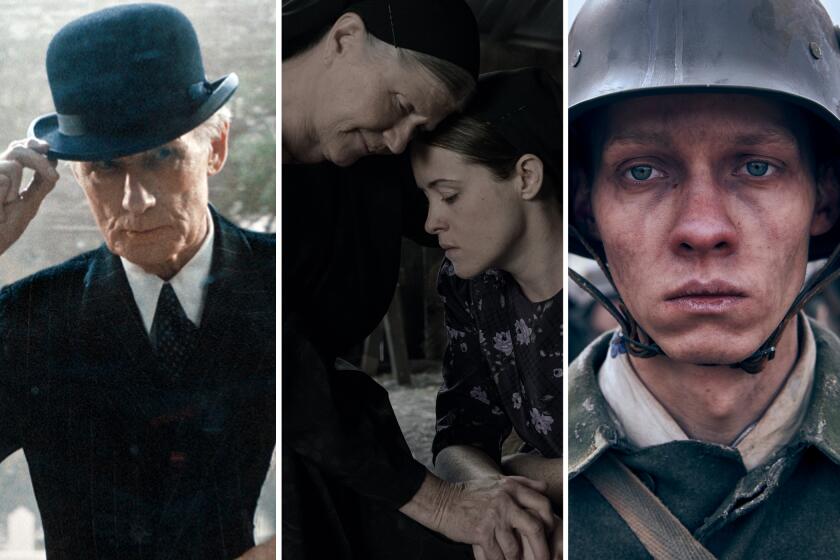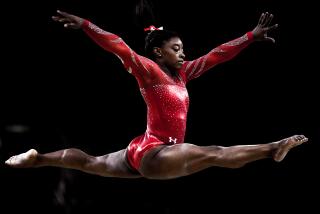Nature plays a key role in documentaries this season, but so do Putin powerplays
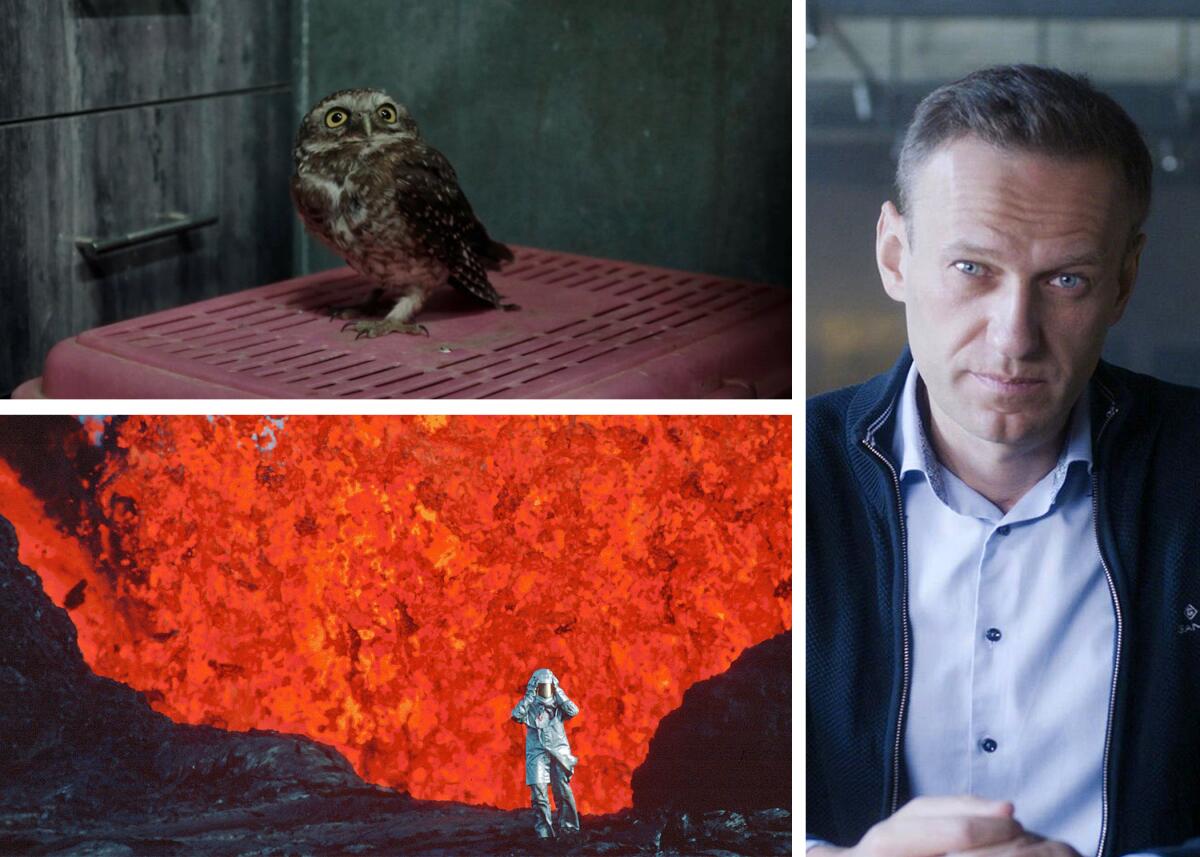
- Share via
Although many of the documentaries up for Academy Awards consideration this year were made in the thick of the pandemic, the challenges did little to inhibit a particularly robust array of nonfiction submissions. Here’s a look at three notable contenders among some 144 films up for shortlist consideration Dec. 21.
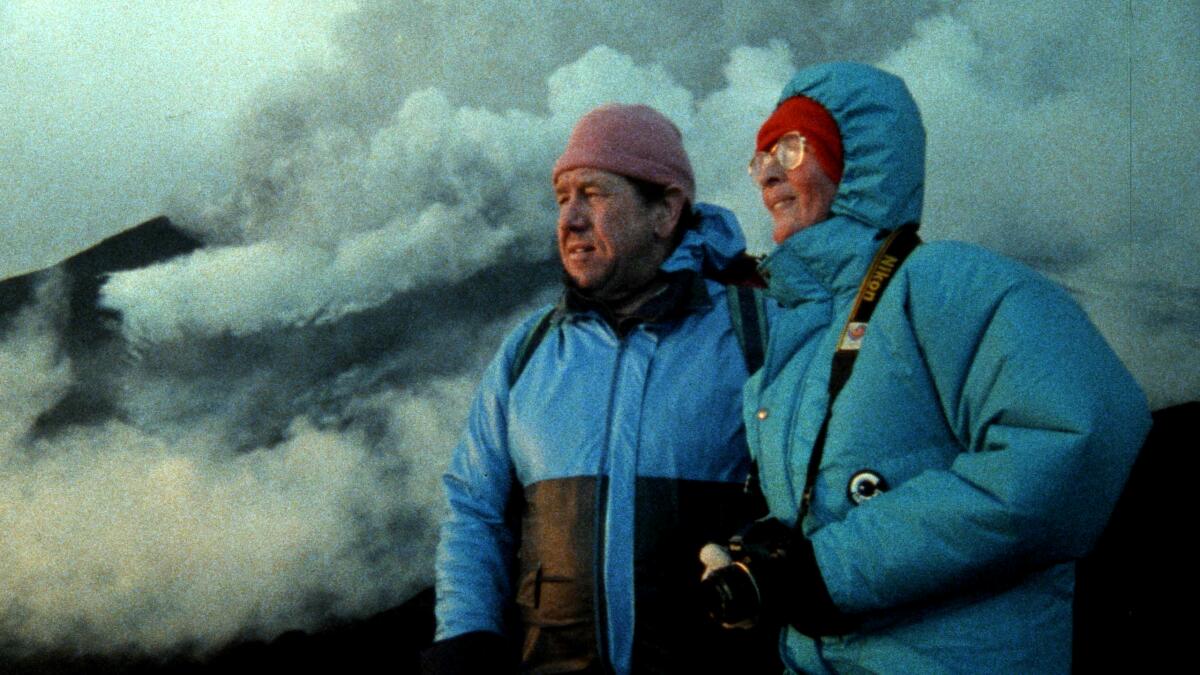
‘Fire of Love’
Passion erupts, all too literally, in “Fire of Love.” The documentary about celebrated French volcanologists Katia and Maurice Krafft recounts the love affair of an intrepid couple who for 25 years together risked their lives capturing the rapturous beauty and terror of live volcanoes in every remote corner of the world. That love, of course, wasn’t only for each other but for the volcanoes, and it led to their deaths while filming at Mount Unzen, in Japan, on June 3, 1991.
The films they made see new light in Sara Dosa’s beguiling archival romance, which has become one of the year’s most popular nonfiction features. The filmmaker got access to some 200 hours of 16mm footage shot by the couple. “Everything seems so alive,” said Dosa, who discovered the Kraffts’ work while doing research for her previous film “The Seer and the Unseen,” set in Iceland. “From close-up shots of bubbling lava to these grandiose wide shots of gas just gracefully being emitted from a cone, they really captured such profound portraiture of the Earth.”
Dosa described some of that footage as “a baffling and beautiful puzzle” that nonetheless led to a deeper understanding of the Kraffts’ embrace of the natural world. Miranda July’s narration added another element. “We were particularly excited to work with her because of how palpably and poignantly she understands human relationships and the absurd beauty of love,” Dosa said of the artist and filmmaker, noting that the narration was, in part, inspired by the style of French New Wave films the Kraffts would have experienced in the 1960s.
Yet, what remains most compelling about the Kraffts, for Dosa, is the couple’s spiritual bond with the volcanoes. “It was like once they witnessed these forces they couldn’t return to the mundane world into which they were born,” she said. “That’s one element that yielded such richness for us as storytellers. Also, they were hilarious.”
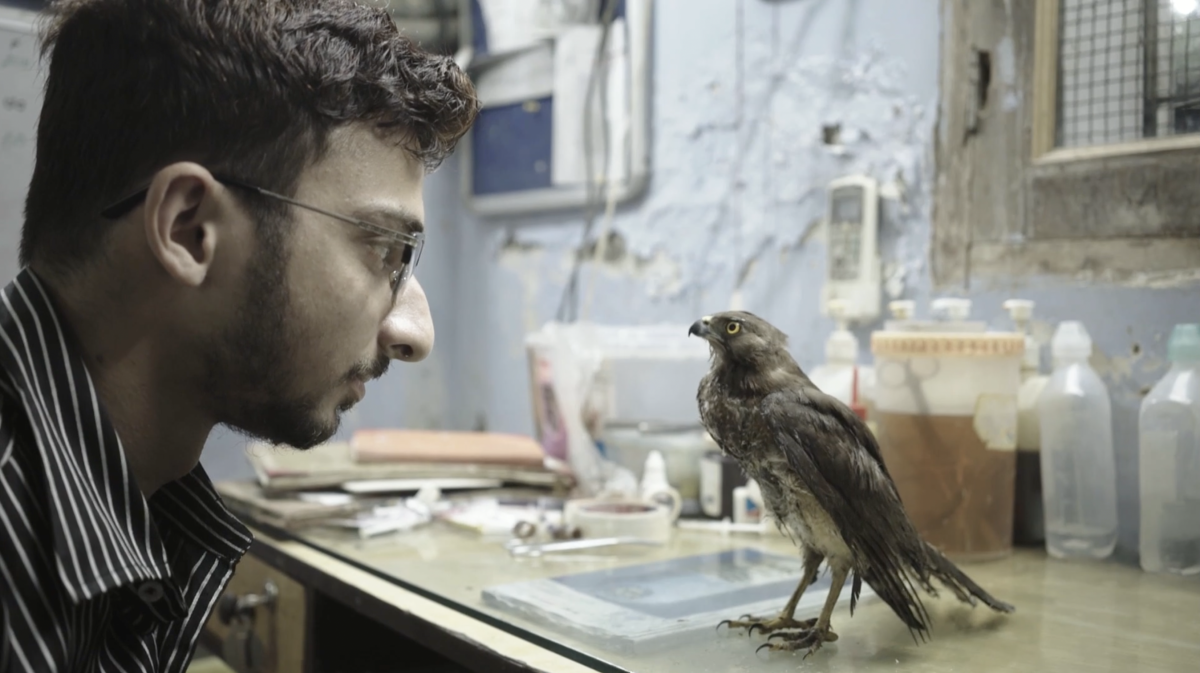
‘All That Breathes’
In the dangerously smog-choked Indian metropolis of New Delhi, brothers Nadeem Shehzad and Mohammad Saud, and their cohort Salik Rehman, take on the nearly superhuman task of rescuing black kites: scavenging raptors whose carnivorous appetite makes them into something like airborne garbage disposals. When the sick or injured birds fall from the poisoned sky, these men try to repair them at their wildlife hospital, a makeshift affair in a grubby basement.
“I felt like these were three Don Quixotes,” said filmmaker Shaunak Sen, who chronicles their rescue efforts in “All That Breathes,” which won a grand jury prize at this year’s Sundance Film Festival. “Every bird that ultimately flies out … is a miracle, you know? And the fact that they soldier on despite the all-encompassing bleakness, there’s a radical hope to it. These are micro-gestures that feel like life rafts.”
The documentary is distinguished by its striking visual design, which expresses the theme of “the city as a space where human and non-human lives are constantly jostling cheek by jowl.” Exquisite cinematography (by Ben Bernhard and Riju Das) transforms the opening scene, a gathering of rats amid a Stygian tableau, into something quietly and unexpectedly breathtaking. It is only the first of several such sequences. “The brothers themselves are sort of philosophers,” Shaunak said. “The film had to make audiences contemplate. I had to somehow find a poetic, lyrical quality.”
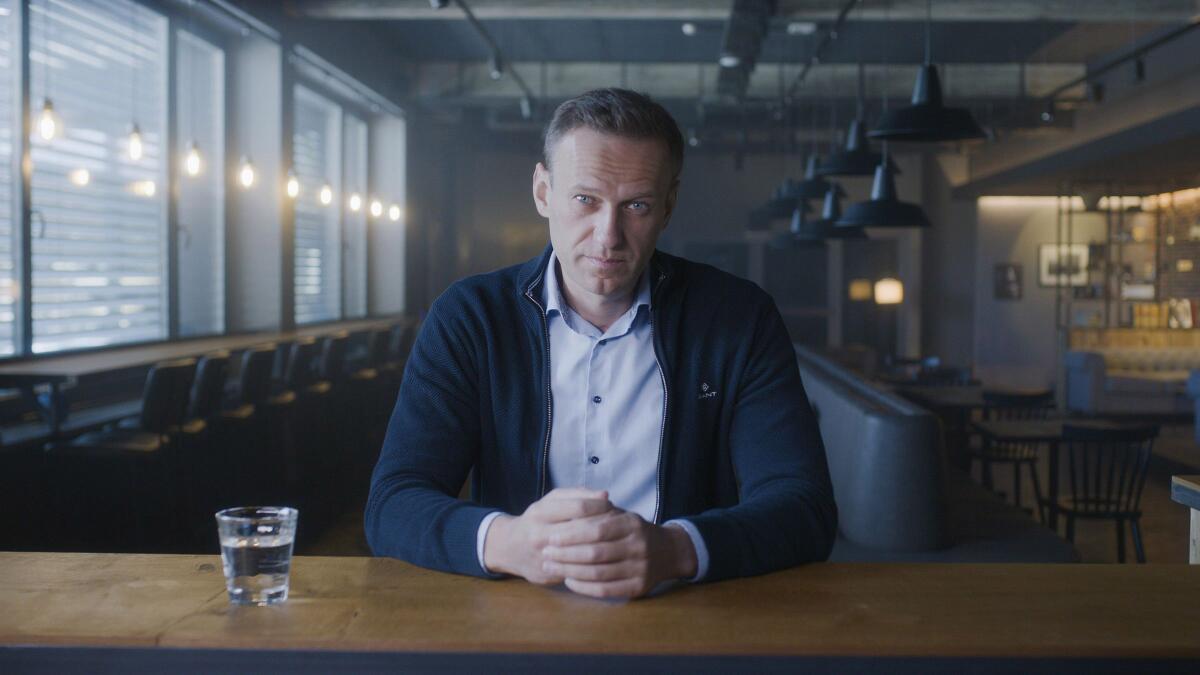
‘Navalny’
With his leading-man charisma and media savvy, Russian resistance leader Alexei Navalny might as easily be an action hero as Vladimir Putin’s biggest political threat. It makes sense that the movie that bears his name crackles with the jet-setting intrigue and lethal stakes of a Jason Bourne thriller — a bold contrast to standard documentary dynamics. Director Daniel Roher puts the viewer in the room as the businessman-turned-politician confronts his would-be assassin on the phone, and later makes a fateful airplane journey from Germany back to Moscow, where he was detained in January 2021 and later imprisoned.
“We were in the right place at the right time and our cameras caught extraordinary dramatic events as they were unfolding in real time,” the filmmaker said. “That gives the film an immediacy and a presence that really resonates with audiences.”
Roher maximized the impact of their brief time with Navalny and his family, shooting as the dissident recovered in Berlin from a near-fatal poisoning by a Novichok nerve agent. The subject had his own reasons for granting such extraordinary access. “My crew and I had to understand that we were being weaponized by this guy for his own political aims and ambitions,” the director said. “And we understood that. That sort of tension between subject and filmmaker is threaded into the film.”
Only a few weeks after the film’s premiere, Russian tanks rolled into Ukraine. Meanwhile, Navalny sits in a Russian gulag. “It’s my hope that Navalny, through the film, is able to remind the world that an alternative vision for what Russia can be is possible,” Roher said. “... but ultimately, I hope the film helps to keep Navalny alive.”
Our BuzzMeter film experts predict the Oscar winners in 10 categories. Check out the consensus picks, close races and interesting narratives - and vote in the polls for every category.
More to Read
From the Oscars to the Emmys.
Get the Envelope newsletter for exclusive awards season coverage, behind-the-scenes stories from the Envelope podcast and columnist Glenn Whipp’s must-read analysis.
You may occasionally receive promotional content from the Los Angeles Times.
